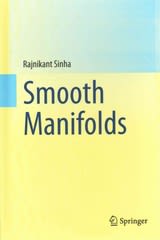Question
Return Dispersion and Diversification (Assignment for Chapter 11) Firm Specific Risk is not a problem for diversified investors. Let's imagine this in a context with
Return Dispersion and Diversification (Assignment for Chapter 11)
Firm Specific Risk is not a problem for diversified investors. Let's imagine this in a context with extreme uncertainty that is eliminated through diversification (ie no market/macro risk).
Show your work on this file, so Tyler can see how you got your answer. You can use % or decimal form for the numbers (just be consistent!!)
Imagine a single firm (stock) that will either give a 100% return or lose 80% with coin toss odds.
1)What is the mean, variance, and standard deviation for the return distribution?
2)What about a portfolio with two stocks like that (and no correlation between them)?
Assume equal amounts are invested in each.
What is the distribution, mean, and standard deviation for the portfolio return?
Note: two methods (using probability weights or all 4 outcomes with equal odds)
It helps to use event tree logic to get the odds of different portfolio outcomes!
(Note this is a bit different from the coin toss game on page 341
because we are averaging to get portfolio return-not adding)
3)What about a portfolio with three such stocks (again, totally uncorrelated)
Now use the probability weights instead of all 8 possible outcomes
But you can find #s by thinking about the event tree with multiplication
for probabilities (independence makes conditional odds equal at all forks)
Find the mean and standard deviation for the portfolio return
Show the probability distribution for the return (in a table, list, or diagram)
(it can be in decimal form or % form but be consistent)
4)What about four such stocks??Don't repeat all the work, but explain why the distribution for return outcomes gets "tighter".For example how low are the odds of losing 80% on your portfolio in this case? What about making 100% on your portfolio?
5)Imagine 48 such stocks (all uncorrelated). Think about how many possible outcomes there are for the combinations of particular companies going up versus down? Imagine the event tree to come up with the formula. Of those, how many will result in a portfolio return of -80% or +100%. What about a portfolio return of 10% (intuition not precise math)?What does the distribution pattern look like for the portfolio return?Use the fact that it is approximately normal (aka the central limit theorem), as well as the rule that the standard deviation of the average of all these separate random variables equals the standard deviation of one of them divided by the square root of 48.Recall that the bell curve has roughly 95% of its probability within two standard deviations of the mean.How tight is the distribution for the portfolio return?What range for portfolio returns can you be 95% sure will end up occurring?
6)Now imagine you have 625 of these stocks in the portfolio (still uncorrelated because we are assuming no macro shocks).Find a 95% confidence interval (with the 2 standard deviation rule of thumb that 95% of outcomes are within 2 standard deviations of the mean) for the return on your portfolio.
(hint....10% plus or minus ?? in decimal form)(or 10% plus or minus??in % terms)
What if we bring Market Risk into the picture....
7)Now let's imagine lots of firms with the above firm specific dynamics, but add macro factors that add 20% or deduct 20% from the 10% expected return on each company based on a quarter that I flip which represents a good or bad business cycle shock....What is the minimal standard deviation you can achieve for your portfolio return distribution when that market risk is present even if there were thousands of firms in the fund to eliminate all firm specific risk?Hint: if the portfolio is very diversified, the firm specific factors nearly cancel to make portfolio return become 30% in good years and -10% in bad years (with an expected return still at 10%).
8)Now let's imagine half the companies get a 10% impact from the macro shock (defensive stocks that are more like Walmart) and the other half get a 30% impact (aggressive stocks like GM). Note: the market still gets a 20% impact but some stocks are more sensitive to the macro shocks. If there are tons of each kind available then how can you reduce your portfolio standard deviation?How do you think that will affect the prices of different kinds of companies and the opportunity cost of capital (aka adequate return for shareholders) for Wal-Mart versus GM?
Note here that correlation with overall market is the source of the problem, BUT it also matters HOW LARGE the magnitude of the correlated moves are.Wal-Mart might be perfectly correlated (correlation = 1) but if the size of its down move during recession is tiny compared to other stocks that makes it a very attractive (safe) stock.We shall see that "Beta" captures both correlation AND SIZE of the correlated moves (making the CAPM model the foundation for determining cost of capital in relation to risk)
Step by Step Solution
There are 3 Steps involved in it
Step: 1

Get Instant Access to Expert-Tailored Solutions
See step-by-step solutions with expert insights and AI powered tools for academic success
Step: 2

Step: 3

Ace Your Homework with AI
Get the answers you need in no time with our AI-driven, step-by-step assistance
Get Started


